Specialists - Year 3 & 4 Week 6
Week beginning - 18 May 2020
Click here to see last week's Specialist page again.
P.E.
30-45 minutes per day
*Download the 60 Second Challenge Activity Tracking Sheet to track your progress! Click here
Monday
Warm-up
60 Second Challenge: Skipping Click here
Ring of Fire!
Steps: Set up 5 objects in a circle, then add markers from the obstacles (see diagram below).
Tall objects which can fall down easily make the best obstacles for this game e.g. water bottles.
Use an underarm throw to land a ball/object inside the obstacles without knocking any of them down.
Start by throwing from the closest marker and move back to the next when you successfully land inside the circle.
Questions: Explain the best shape of the ball flight path to keep the obstacles standing up.
How can you change your throw technique to make the ball move in the best flight path?
How did you change your throw when you found you weren’t landing in the target?
At what speed does the ball/object move when you are trying to aim for a small target? Why?

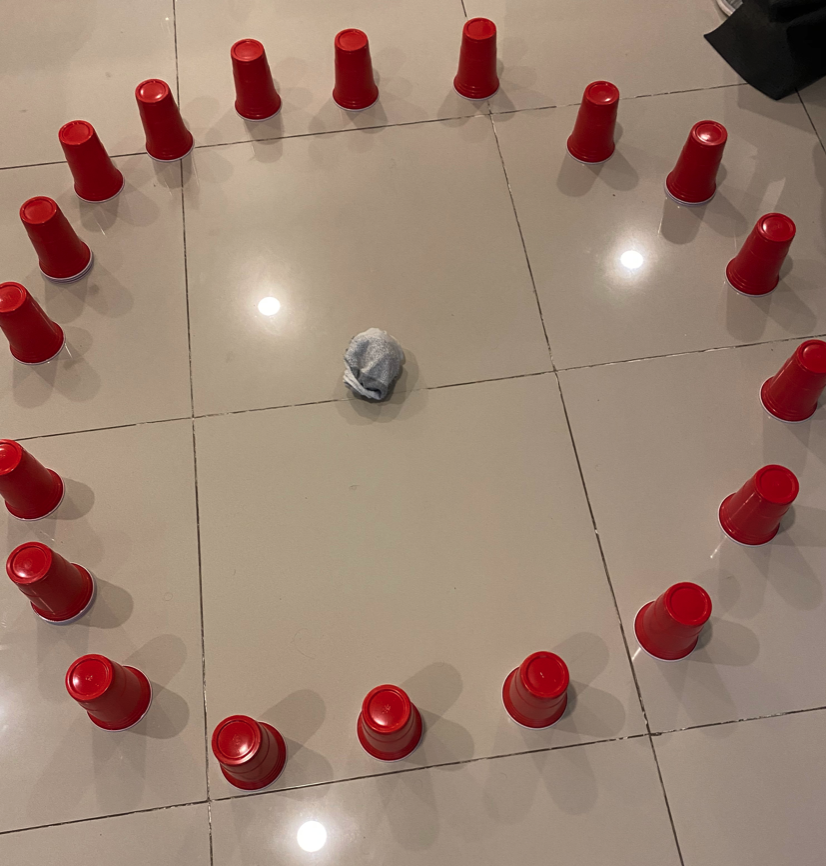
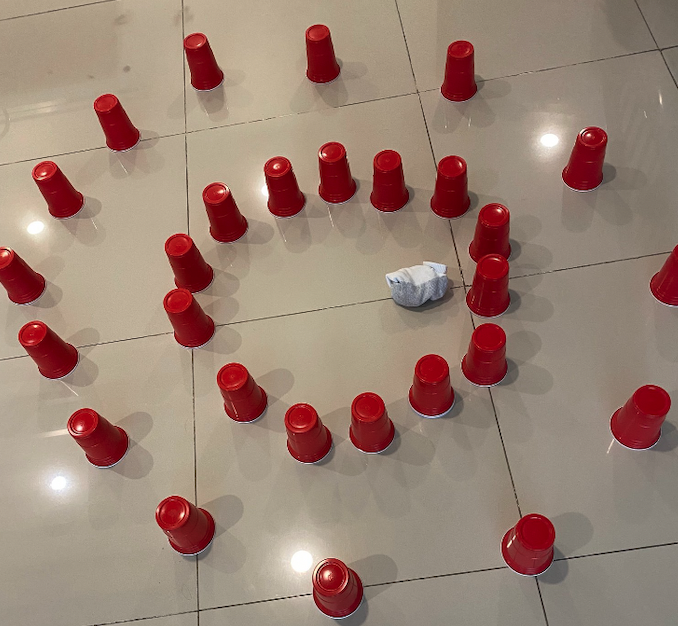
Tuesday
Warm-up 60 Second Challenge: Socks in the Box Click here
Today we are going to practise a wide range of skipping exercises.
If you don’t have a skipping rope, you can use a hula hoop, a spare rope or you can simply use your imagination and pretend you have one.
There are 26 individual skipping exercises and 3 partner ones.
Mr M can do 20 of the 26 individual skipping exercises. Can you beat his score?
Mrs Yue-Lamb can do 18 of the individual skipping exercises. Can you beat her score?
See below for the activities.
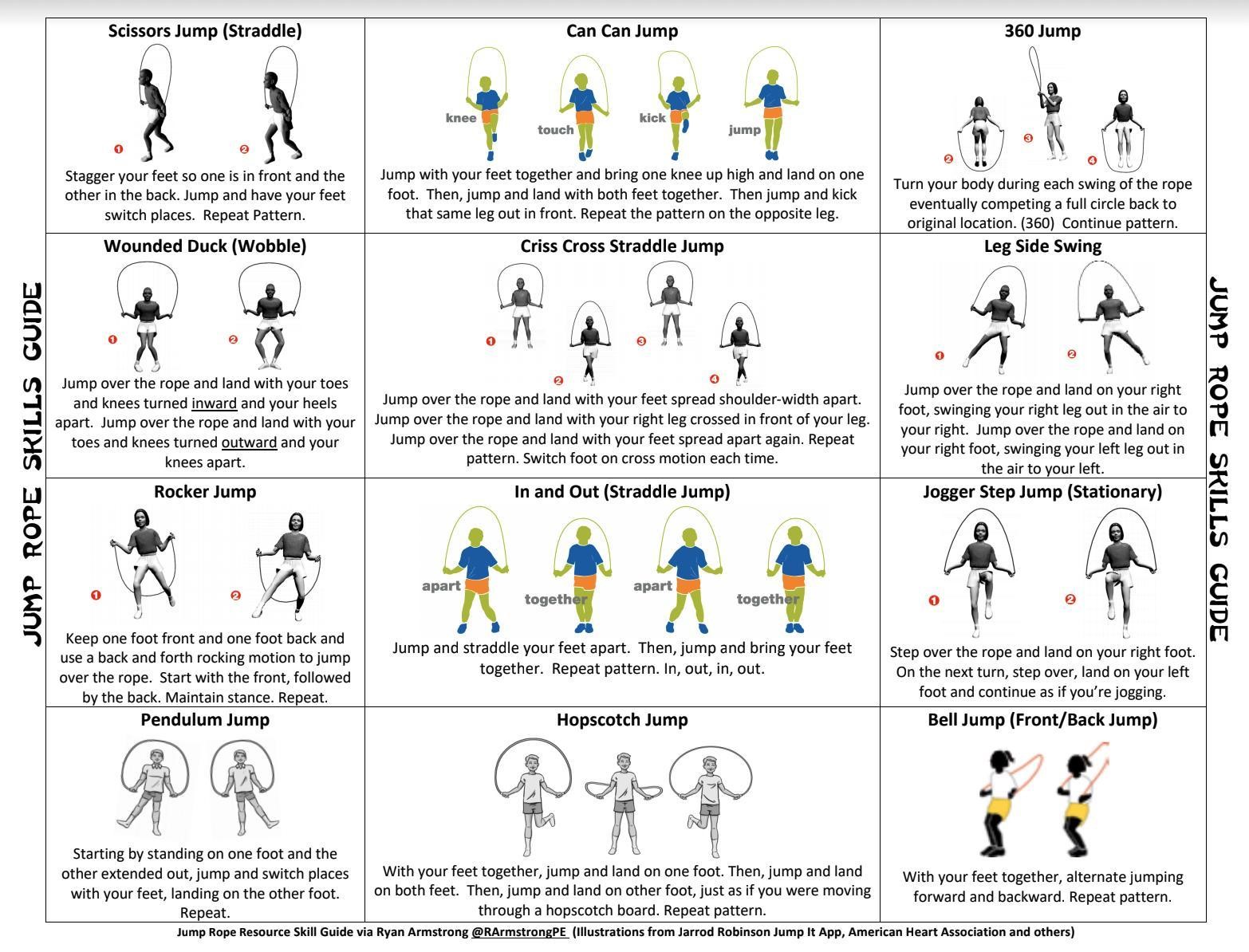
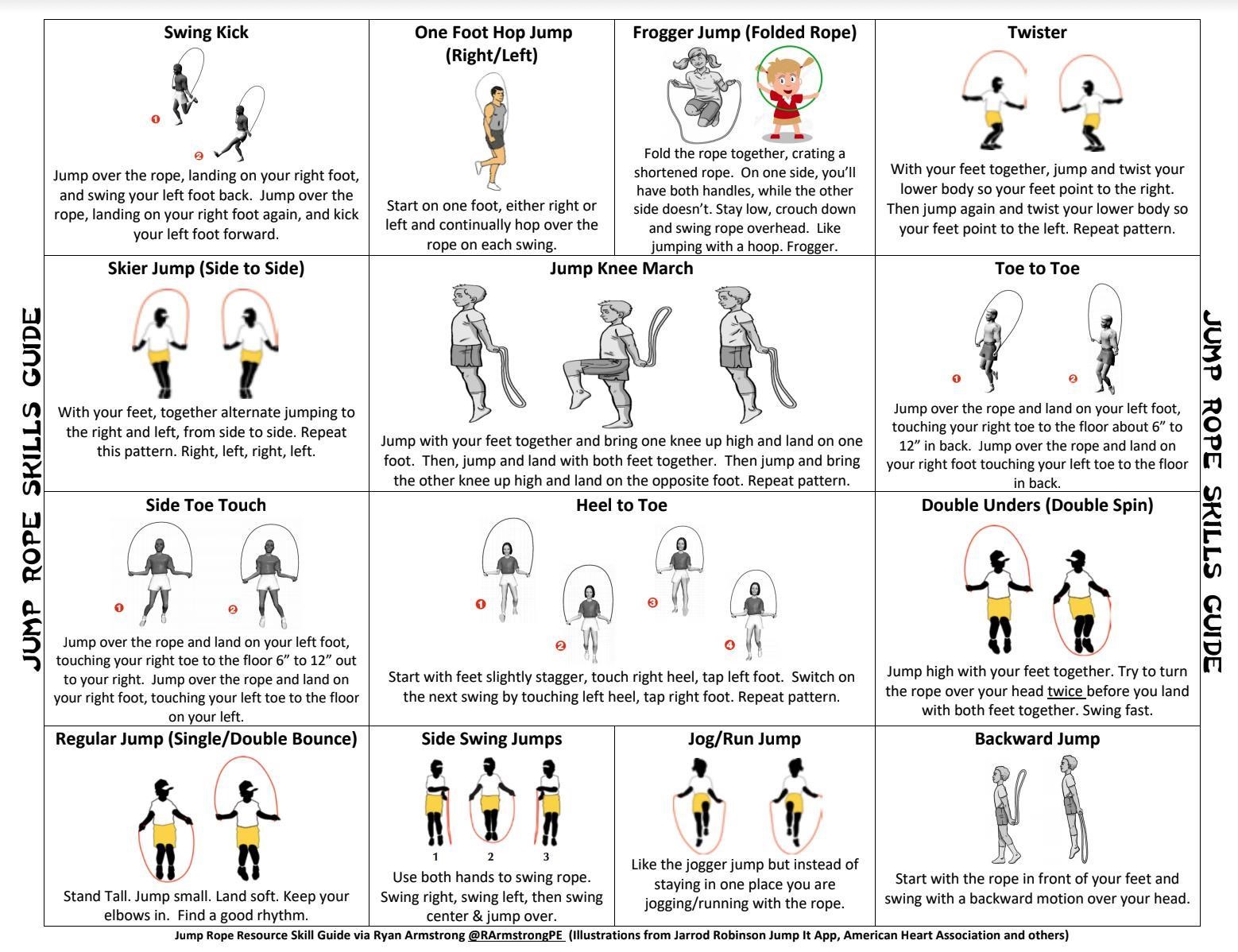
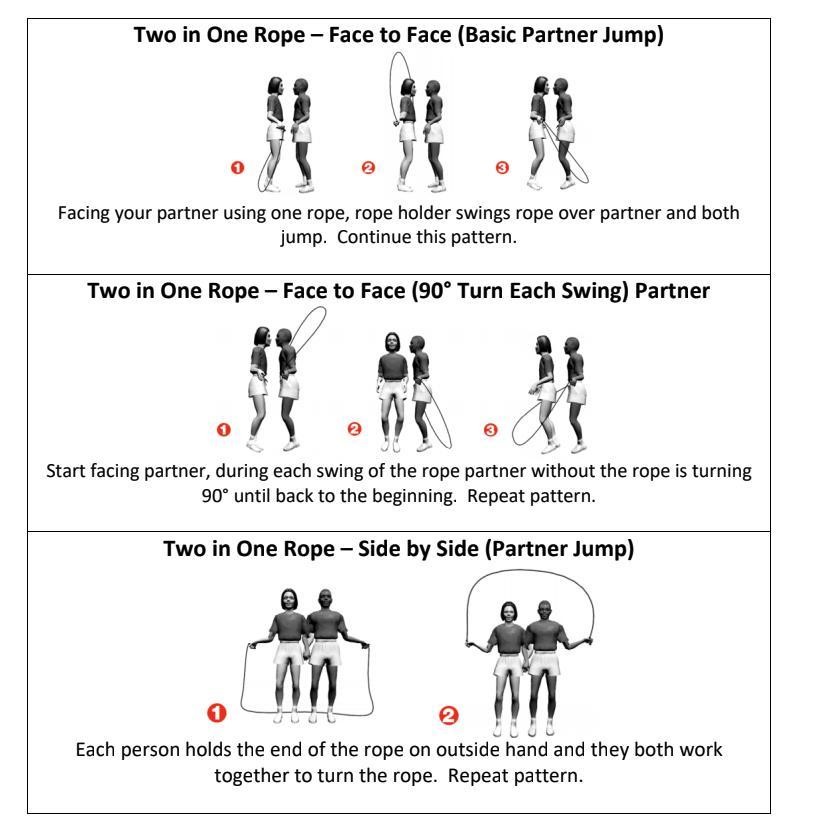
Wednesday
Warm-up 1
60 Second Challenge: Speed Bounce Click here
Warm-up 2
Time how long you can hold the plank position.
To hold the plank position, start by lying flat on your tummy and then lift your body off the ground so only your forearms and toes are on the ground, holding your body up.
Keep your body in a straight line.
Mrs Yue-Lamb can hold for 1 minute and 5 seconds, Mr M can hold for 1 minute and 25 seconds.
Write your time down with the date and compare it to the last time you completed this activity.
Get Outside!
Complete at least 2 of the following activities:
Bike ride around your house
Jog around your house
Walk to the nearest park with a family member
Kick a footy or soccer ball at your nearest oval with a family member (can you create some trick shots?)
Throw a frisbee as far as you can at your nearest oval with a family member (can you create some trick shots?)
Play tennis against a wall and see how many rallies you can get in a row (can you create some trick shots?)
Play downball against a wall and see how many rallies you can get in a row (can you create some trick shots?)
Play some basketball and see how many shots from the free throw line you can get in a row (can you create some trick shots?)
Thursday
Warm-up 1
60 Second Challenge: Squat Jumps Click here
Warm-up 2
How many squats can you do in 1 minute?
Remember when doing your squat, to keep your feet shoulder-width apart, your back straight and pretend to sit down on a chair.
Try and get as low as you can before you lose balance and then spring back up.
Mrs Yue-Lamb can do 48 squats in 1 minute and Mr M can do 47.
Write down your score with the date and compare it for next time.
Fitness Challenge
Challenge yourself in this fitness test to see how well you can complete each activity.
It is entirely up to you if you want to do all 7, or you can do 1 or 2.
Remember to write a short reflection about how you did.
What were your feelings before and after each test?
Did you do better than you expected? Did you surprise yourself on any of them?
Which one was your favourite?
Which one was your least favourite?
Which one was the hardest?
Which was the easiest?
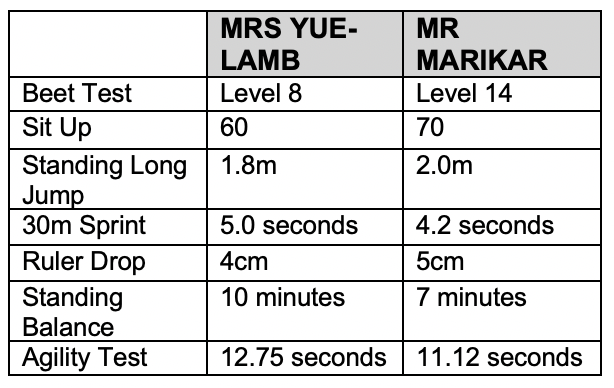
You don’t have to answer all these questions in your reflection, these are just some examples of questions you might think about when reflecting on your tests.
See below for your fitness tests!
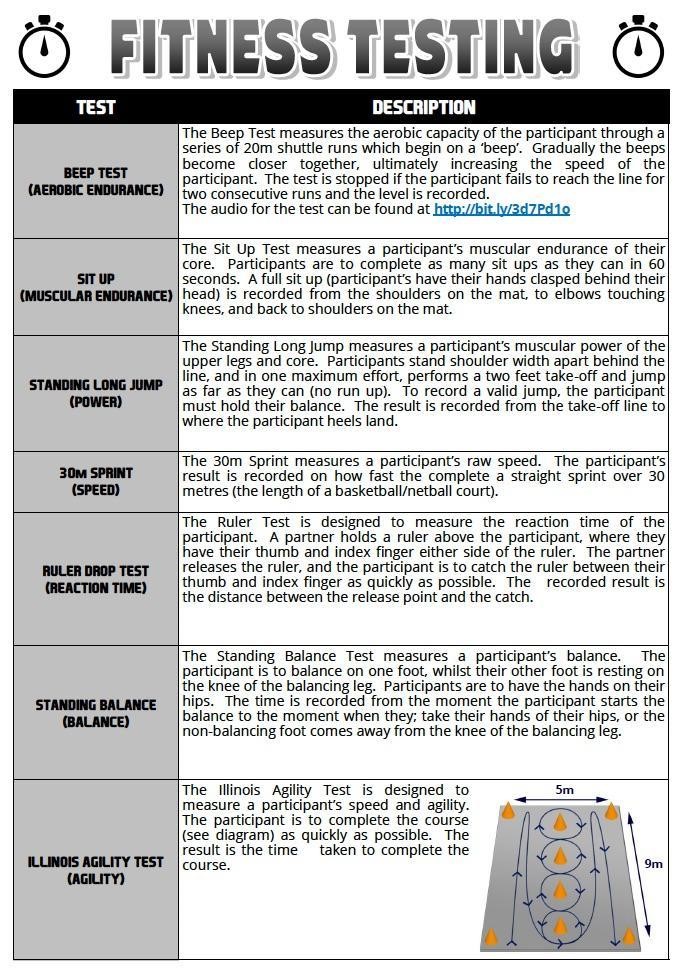
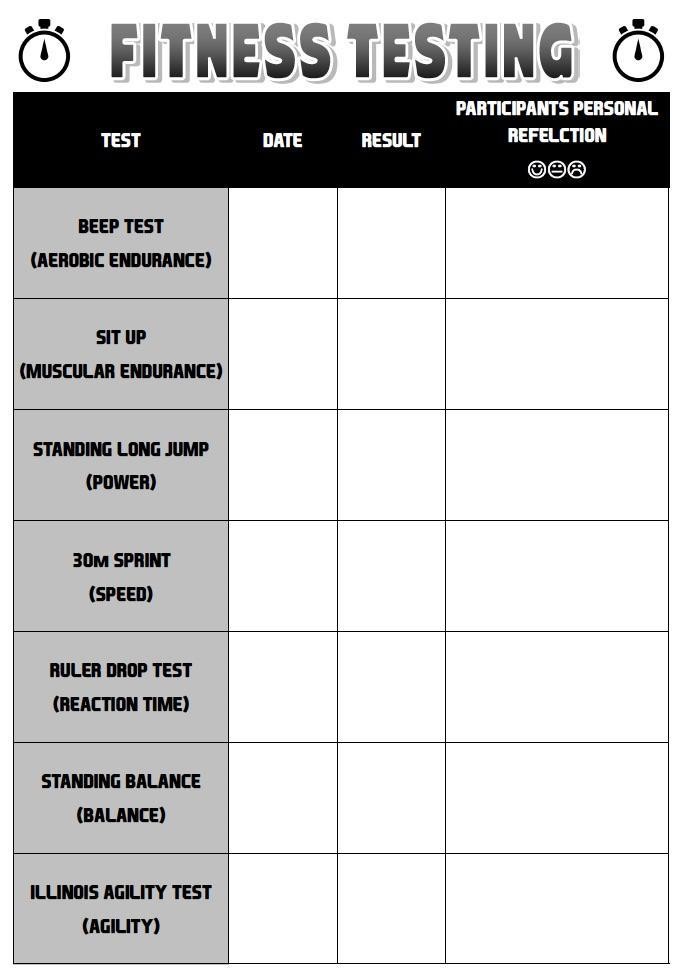
Friday
Warm-up 1
60 Second Challenge: Star Jumps Click here
Warm-up 2
Go Noodle - ‘Fast Feet’ Click here
Build your own striking implement project
Today you will learn to build your own striking implement.
After making your striking implement, challenge yourself to see if you can beat any of the specialist teacher scores!
See below for your challenges!
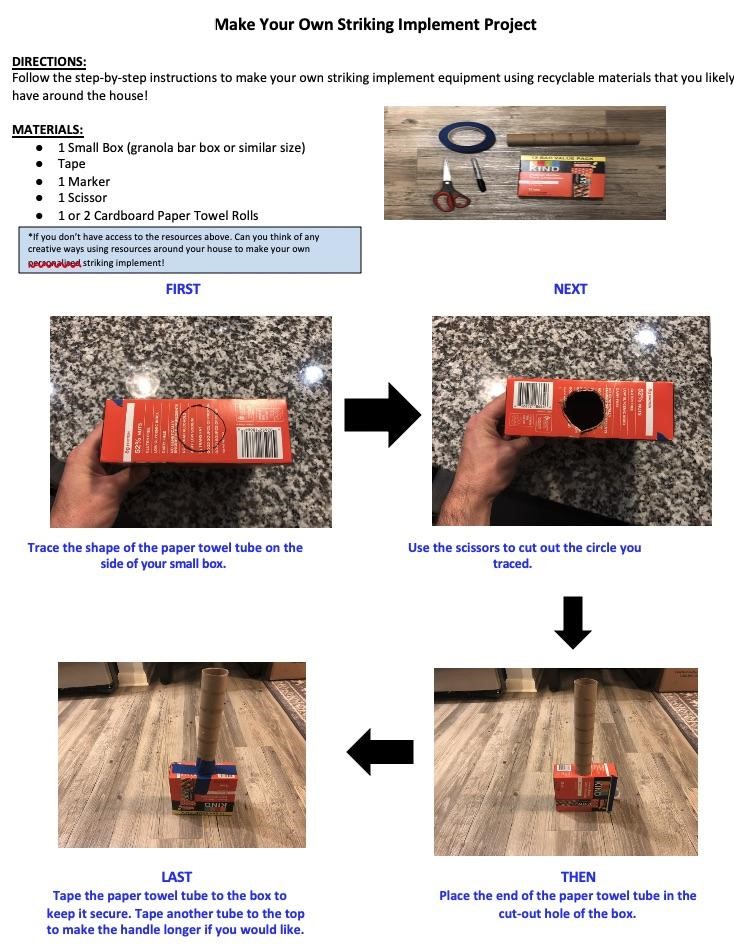
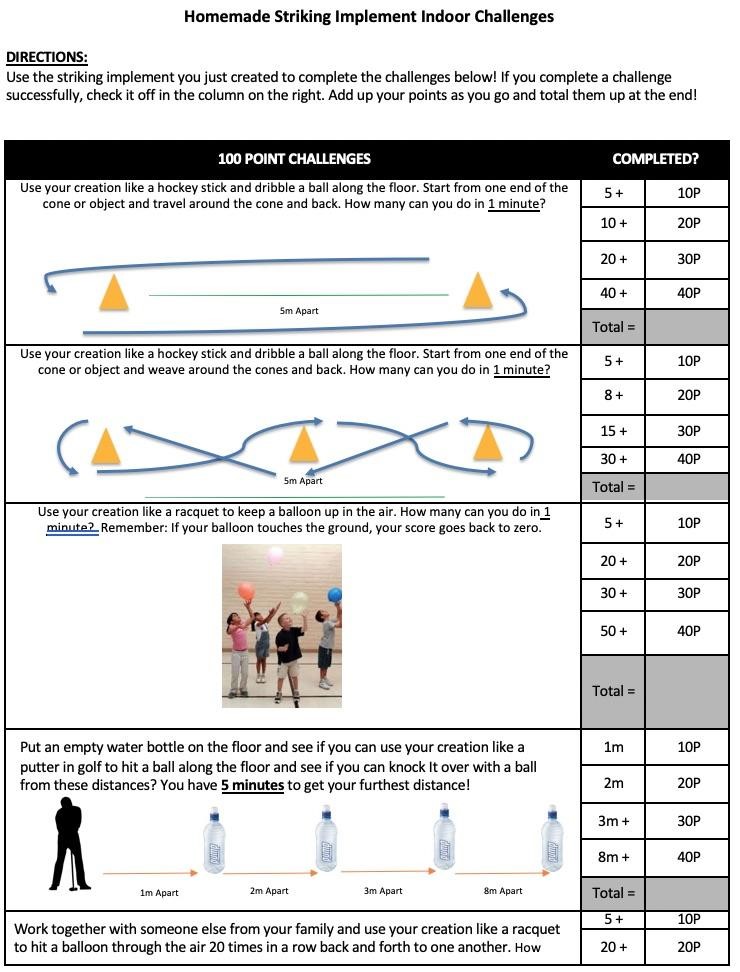
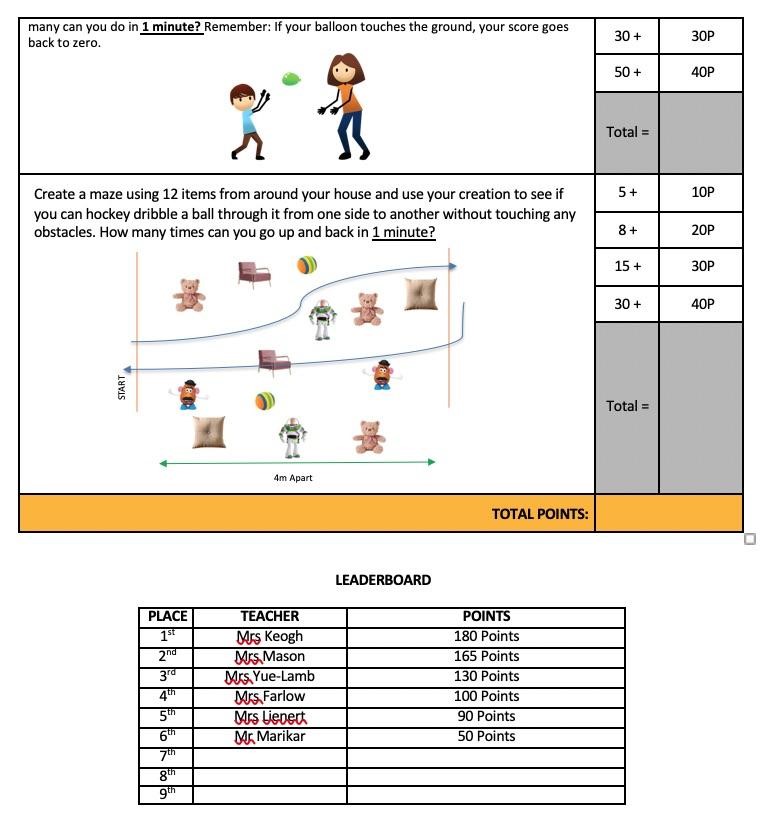
Spanish
30 minutes per week
Learning intention: We are learning the different ways in which to say different letters within words.
Spanish Pronunciation Rules- Las letras (The Letters)
Read the following rules and apply your knowledge to say the words underneath each letter rule.
Letter C
Before E and I – C sounds like S or TH (in Spain)
Before A, O and U – C sounds like K
Words: cielo, cebra, corbata, coche
Letter G
Before E and I – G sounds like H (as in ‘hiccup’)
Before A, O and U – G sounds like G (as in ‘get’)
Words: girar, gustar, gente, ganar,
Letters LL
When you see the letters LL together in a word, they make a Y sound (as in ‘yacht’). In Chile, the LL makes a SH sound!
Words: llamas, llamo, Amarillo, paella
Letter H
H is mostly silent, except in words adopted from other languages (Hawaii).
When H comes after C, both letters together (CH) are pronounced as CH (chair)
Words: hola, hablo, mucho, muchas
Letter U
In most cases U sounds like OO (as in ‘look’).
However, U is silent between G and vowels E (e.g. guerra) and I (e.g. guitarra).
For U to be ‘heard’ between G and E or I, you have to use a special symbol called a dieresis – ü (e.g. lingüístico).
It makes a GW sound when there is a g next to one of these.
Words: Guitarra, pingüino, gorro
Letter R
R in the middle/end of the word sounds like the letters P-D being joined together
R (in front of the word) or RR (in the middle of a word) is harder but pretend that your mouth and tongue are like a motorbike RRRRRREVVING up a hill!
Your tongue moves up and down quickly inside your mouth (it’s called an alveolar tap!)
Exercise that will help train up your tongue to get it rolling:
Say the sound/words as fast and as many times as you can “P-D, P-D, P-D, P-D”.
Words: carro, perro, regalo, giro
Music
60 minutes per week
Learning Intention:
We are learning to describe the timbre (characteristics) and mood of an instrument.
This is the last lesson we will be doing on 'Hoe-Down'.
Listen to 'Hoe-Down' again Click here and see if you can identify any of the instruments in the song.
Write down the instrumentation.
You can listen to examples of the different instruments of the orchestra in the following link: Click here
Choose your favourite-sounding instrument from the ones you have written down and create a 'Wanted' poster.
On your poster, draw the instrument, describe what it looks like, the material of which it is made, and describe the mood the instrument creates in Hoe-Down.
You can look at the pictures below to get some ideas as to how your poster can look.

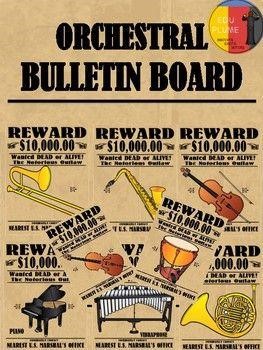
Those of you who play an instrument: see how much of Hoe-Down you can play with the orchestra.
Can you finish at the same time as the orchestra? Click the link to get to the sheet music: Click here
Art
60 minutes per week
Learning Intention: We are learning different ways of displaying artworks to enhance their meaning for an audience.
Reflection and Display
Consider the integrity of your Artwork from home this term and answer these questions to yourself.
Did you do your best?
Is there something you missed?
Do you need to go back over an idea? What can you improve or resolve to finish well?
Perhaps your drawings, or construction can be tidied up in some way. You may wish to make a new artwork following ideas and using skills you have learned so far this term.
Negotiate with your family for a space to display all your completed works as an exhibition.
Perhaps other members of the family have also done artworks they can contribute.
Think of a title for the exhibition.
Take photos, invite your family and ask them to share their thoughts and ideas about the works.
Set the scene with appropriate lighting, music and a plate of finger food.
Email the photos of your work to Ms Farlow.
Library
30 minutes per week
Learning Intention:
We are learning that alliteration can be used in different ways.
Last week we learnt about alliteration. Alliteration is often used in tongue twisters.
A tongue-twister is a sentence or expression which is very difficult to say properly, especially when you try to say it quickly.
Read the well known tongue twister below.
Can you read it out loud without your tongue being twisted?
I tried and got my words muddled up. It takes practice!
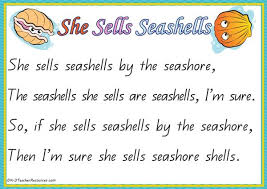
Read the story ‘Terrible Tricky Tongue Twisters’ from Epic! library. Click here
Read out loud the alliteration you created last week.
Can you say it quickly without your tongue twisting?
How many times in a row can you say it before your tongue twists?
On page 17 of this story there is a tongue twister in Spanish.
Maybe you can surprise Señora Mason and learn this tongue twister to share with her!
© Copyright Laburnum Primary School
